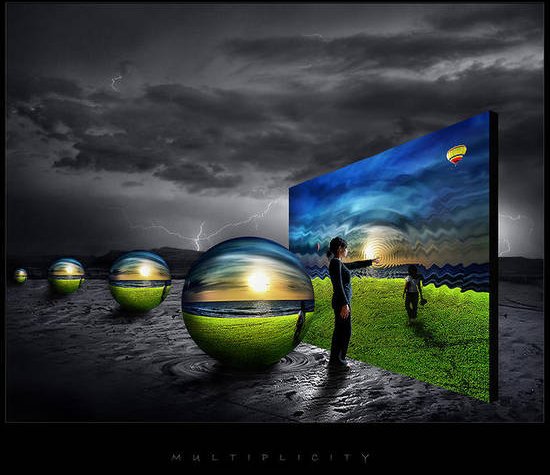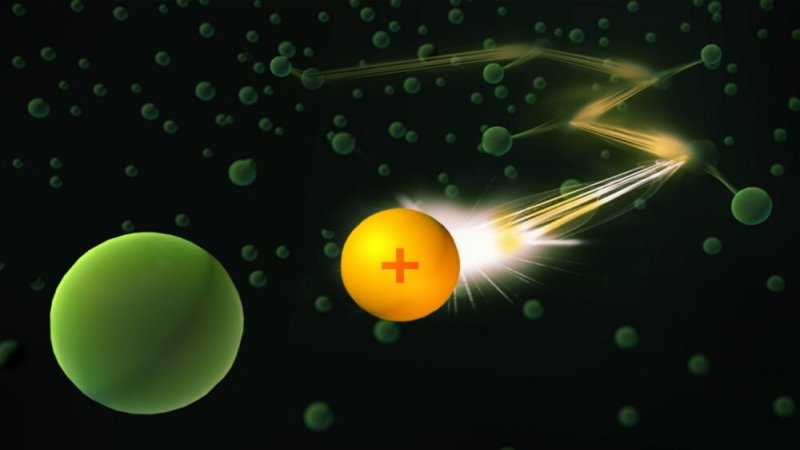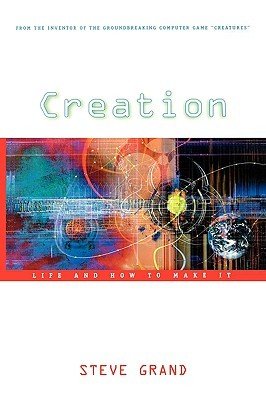We Live In A Virtual World Inside Our Heads – Says Steve Grand, Author Of “Creation: Life And How To Make It”
MessageToEagle.com – What is life? How does it come about? What exactly is the answer to the ultimate question of life, the universe and everything?
These phenomena are just as real as atoms – perhaps even more real.
If anything, the entire universe is actually made from events, of which atoms are merely some of the consequences.
I want to try to show that life is more than just clockwork, even though it is nothing but clockwork,” Grand writes in his book.
Grand is fully aware of how many people are curious about the nature of souls and afterlife. He does not deny the importance of the issue, but be warned – you might not like his views on the subject.

“We human beings are obsessed with our souls. Painters don’t paint portraits because they enjoy applying pigment to canvas. Poets don’t write for the joy of seeing squiggles on paper. Both want to capture some essence, some aspect of that which we call the human condition.
See also:
- Death Is Just An Illusion: We Continue To Live In A Parallel Universe
- Past Present And Future Exist All At Once – Unravelling Secrets Of Quantum Physics
- Our Brain Is A Holographic Machine Existing In A Holographic Universe
What happens to us when we die is, of course, what strikes us as the most pertinent and sometimes the most pressing question when we dwell upon the topic of soul.
One day, each of us will face death. Ideally, most of us would prefer to forego the experience altogether, but at the very least we would like some hints, if not assurances, as to what will befall us when our time comes. But before we die we are alive, and life itself is such a strange phenomenon, something so distinctive and inexplicable, that I think we are all deeply fascinated by what it means.

We have good reason to be protective of our souls. Quite apart from our fear of mortality, we rely on our veneration of life to guide our everyday choices. Our division of the world into “living” and “non-living” seems to be one of the most fundamental judgments we make and, whether it is fair or not, we treat each category in different ways.
Working mostly alone, almost single-handedly writing 250,000 lines of computer code, Steve Grand produced Creatures®, a revolutionary computer game that allowed players to create living beings complete with brains, genes, and hormonal systems–creatures that would live and breathe and breed in real time on an ordinary desktop computer. Enormously successful, the game inevitably raises the question: What is artificial life? And in this book–a chance for the devoted fan and the simply curious onlooker to see the world from the perspective of an original philosopher-engineer and intellectual maverick–Steve Grand proposes an answer.
From the composition of the brains and bodies of artificial life forms to the philosophical guidelines and computational frameworks that define them, Creation plumbs the practical, social, and ethical aspects and implications of the state of the art. But more than that, the book gives readers access to the insights Grand acquired in writing Creatures–insights that yield a view of the world that is surprisingly antireductionist, antimaterialist, and (to a degree) antimechanistic, a view that sees matter, life, mind, and society as simply different levels of the same thing. Such a hierarchy, Grand suggests, can be mirrored by an equivalent one that exists inside a parallel universe called cyberspace. Read more
Perhaps the most profound distinction we make between living and non-living is in our application of morals. The concept of “right” and “wrong” are applicable only to living things. We never accuse an avalanche of being a murderer, and we never campaign for the rights of hurricanes,” Grand writes in his book.
Grand’s theories shed light about the true complexity of a living organism and our perception of reality that in fact is just an illusion.
Steve Grand’s book “Creation: Life And How To Make It” is without doubt enjoyable and thought-provoking.
© MessageToEagle.com
Related Posts
-
 Researchers Guide A Single Cold Ion Through A Bose-Einstein Condensate
No Comments | Jan 28, 2021
Researchers Guide A Single Cold Ion Through A Bose-Einstein Condensate
No Comments | Jan 28, 2021 -
 René Descartes’ Evil Demon Argument – Can Our Senses Deceive Us?
No Comments | Feb 18, 2019
René Descartes’ Evil Demon Argument – Can Our Senses Deceive Us?
No Comments | Feb 18, 2019 -
 2,300 Year Old Brain Surgery Recreated – Evidence Found!
No Comments | Sep 17, 2014
2,300 Year Old Brain Surgery Recreated – Evidence Found!
No Comments | Sep 17, 2014 -
 Search For Dark Matter At Jülich
No Comments | Jul 17, 2023
Search For Dark Matter At Jülich
No Comments | Jul 17, 2023 -
 ‘Unruh Effect’ Can Finally Be Tested In Lab settings
No Comments | May 9, 2022
‘Unruh Effect’ Can Finally Be Tested In Lab settings
No Comments | May 9, 2022 -
 5,000-Year-Old Carrots Were Once Purple, White, Black And Red
No Comments | Feb 21, 2017
5,000-Year-Old Carrots Were Once Purple, White, Black And Red
No Comments | Feb 21, 2017 -
 Satisfy Your Appetite Just By Looking At Pictures Of Food On Your Phone – Danish Experiment
No Comments | May 23, 2023
Satisfy Your Appetite Just By Looking At Pictures Of Food On Your Phone – Danish Experiment
No Comments | May 23, 2023 -
 Kim Ung-Yong – The Man With World’s Highest IQ Has A Message To All People
No Comments | Dec 25, 2015
Kim Ung-Yong – The Man With World’s Highest IQ Has A Message To All People
No Comments | Dec 25, 2015 -
 Vortex Microscope Sees More Than Ever Before
No Comments | Feb 22, 2022
Vortex Microscope Sees More Than Ever Before
No Comments | Feb 22, 2022 -
 Bombay Blood Is One Of The World’s Rarest Blood Groups
No Comments | Mar 31, 2017
Bombay Blood Is One Of The World’s Rarest Blood Groups
No Comments | Mar 31, 2017

